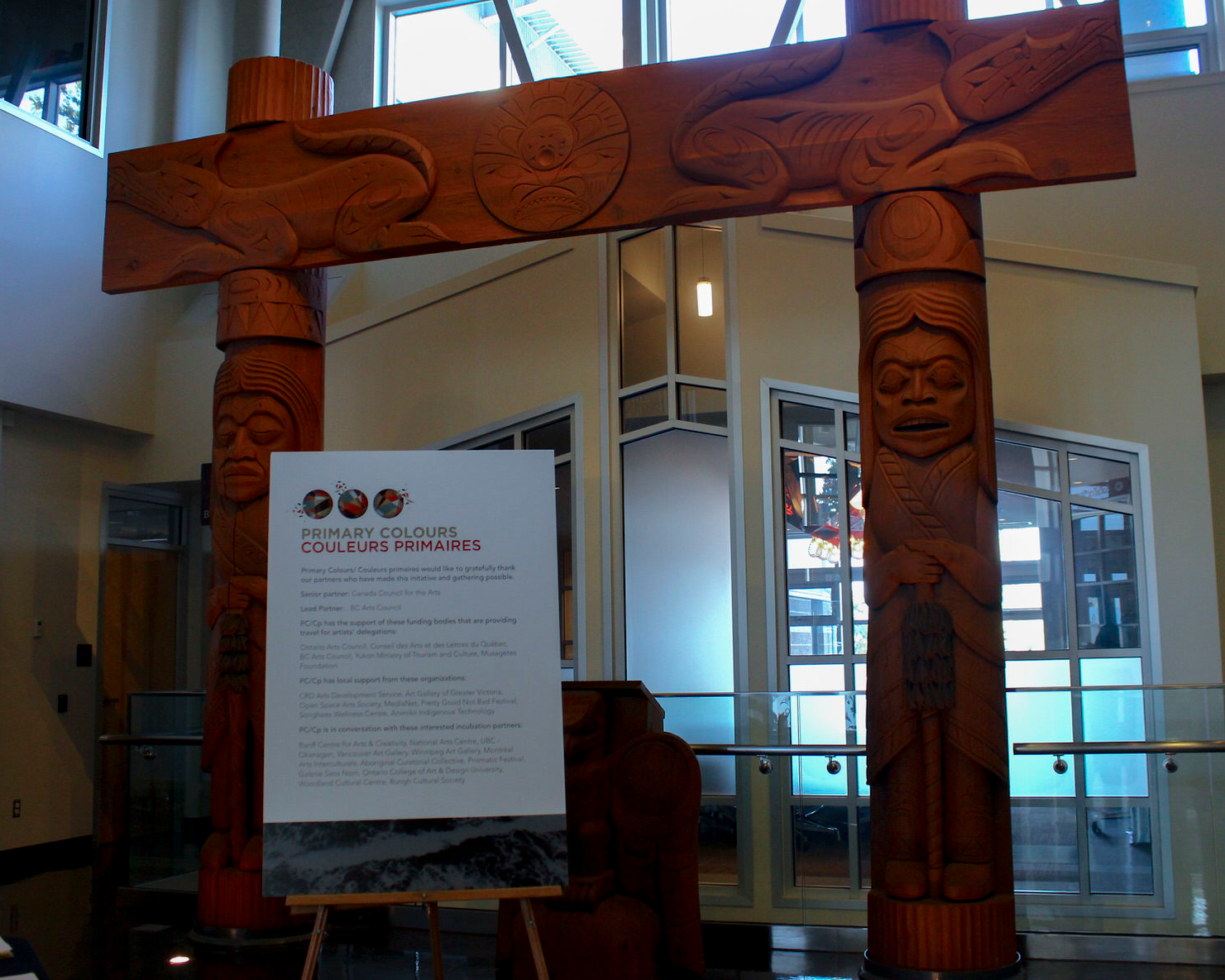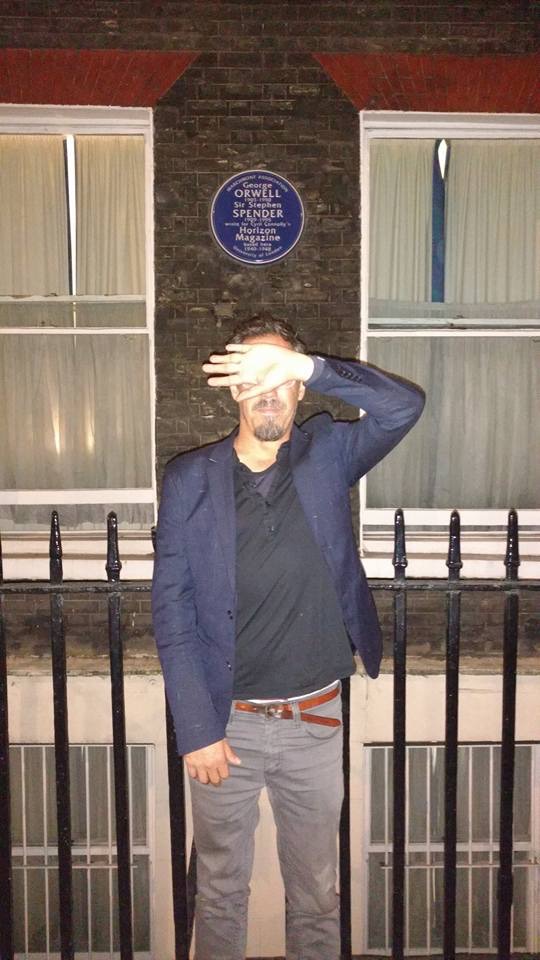 The PC/Cp Gathering 2017 took place at the Songhees
The PC/Cp Gathering 2017 took place at the Songhees
Wellness Centre on Lekwungen Territory.
Photo credit: Sionnan Phillips.
I participated in the presentation Acadia: Indigena, as well as What is the Future of Artistic Practices. I had agreed to contribute to the Acadia: Indigenaconversation firstly, because this was a very rare occasion for Acadian and Mi’kmaq and Indigenous artists to have a long overdue dialogue. Even though there had been closer ties in the past during settler times, the Acadian and Mi’kmaq communities have not broached the divide since the deportation in 1755. Often romanticized, Acadian relationships with First Nations in Atlantic Canada are almost non-existent today. Discussions began before our public conversation, with Natalie Sappier Samaqani-Cocahq, and it became apparent quite quickly that Mi’kmaq and First Nations artists on the East coast have been underrepresented on the national scene, and in the art world, and Indigenous art world in general. AXENEO7 has been taking concrete steps to decolonize over the past 3 years, developing long-term exchange projects with Indigenous organizations and artists. SAW Gallery and AXE will host a Nunavut-based artist every year, in collaboration with Nunavut Arts & Crafts Association, and we will soon embark on a new residency program for Acadian and Mi’kmaq artists starting in 2019. Decolonization cannot be realized simply by presenting Indigenous artists in a gallery. Initiatives need to be taken to allow artists and curators to take space, physical space. Budget priorities need to be shifted in order to sustain a commitment towards decolonization and reconciliation. I was at Primary Colours to listen. Intercultural dialogue, especially between settlers and Indigenous peoples, begins with settlers listening. I heard loud and clear what Indigenous and racialized artists need from Canada’s artistic institutions. Primary Colours exposed me to entire generations of artists in other disciplines I did not know; a rarity in the art world where so many of the same people are shuffled from one place to the next, a flagrant display of white privilege and power. In order to understand Indigenous art history, we need to forgo the idea of forcing it into a Western art canon that it shouldn’t ever fit into. Parallel art histories need to be written and studied, going back a millenia, to counter the idea of a universal art history. The What is the Future of Artistic Practice roundtable discussion helped me grapple with the many questions I had around the future of artist-run culture, how white boxes have become wholly inadequate to present the evolving, interdisciplinary work being made by Indigenous and non-Indigenous artists in Canada.
What was especially moving during Primary Colours was the artist cabaret, a multidisciplinary display of our leading artists and musicians. The collaborations were exciting, stirring, heartbreaking, life affirming. Janet Lumb slowly walking up the stairs, with the sound of the saxophone becoming richer and richer, was a highlight for me, I was transported to a time of jazz infused bars with its melancholy and soul. It was a total discovery for me to meet a prodigy and trailblazer like her, in the most unexpected of performances.
Following my time in Victoria, and all the exciting projects I was presented, I worked with artist and fellow PC/Cp participant, Skawennati to present her major exhibition, Teiakwanahstahsontehrha’ We Extend the Rafters. It is a children’s exhibition with Vox and Aboriginal Territories in Cyberspace, presented at AXE in April and May of 2018. This project exemplifies the ideas discussed during the conference and is what I would consider the future of artistic practice and presentation on Turtle Island.

Stefan St-Laurent, multidisciplinary artist and curator, was born in Moncton, New-Brunswick and lives and works in Gatineau. He was the invited curator for the Biennale d’art performatif de Rouyn-Noranda in 2008, and for the 28th and 29th Symposium international d’art contemporain de Baie-Saint-Paul in 2010 and 2011. From 2002 to 2011, he worked as curator of Galerie SAW Gallery, and has been an adjunct professor in the Department of Visual Arts at the University of Ottawa since 2010. His performance and video work has been presented in numerous galleries and institutions, including the Centre national de la photographie in Paris, Edsvik Konst och Kultur in Sollentuna in Sweden, YYZ in Toronto, Western Front in Vancouver and the Art Gallery of Nova Scotia in Halifax. He has been a curator and programmer for a number of artistic organizations and festivals, including the Lux Centre in London, the Cinémathèque Québécoise in Montréal, the Festival international du cinéma francophone in Acadie, the Rencontres internationales Vidéo Arts Plastiques in Basse-Normandie, France, the Festival international du cinema francophone en Acadie in Moncton, as well as Pleasure Dome, Images Festival of Independent Film and Video and Vtape in Toronto. He is currently director of the artist-run centre AXENÉO7 in Gatineau.